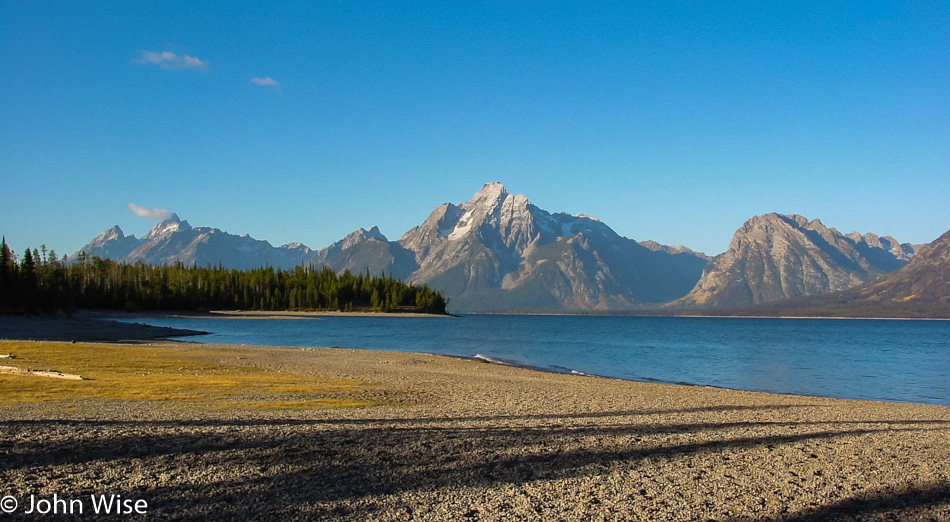
The sky has cleared up down here at the Tetons, but that won’t draw us in from leaving for Yellowstone. While the amount of snow and cloud cover might change in these mountains, the very environment is a lot less likely to change as dynamically as that up north in North America’s largest caldera. During our visit earlier in the year, a ranger had pointed out how the fire of 1988 might have very well scarred the park but also opened up views that no living human had ever seen. Then there’s the hydrology that’s affected by snow, rain, and factors such as ground temperature due to the movement of magma or earthquakes that alter the plumbing within the Yellowstone ecosystem. This all suggests that the activity from week to week and season to season could be impacting what we might see on any subsequent visit. So, let’s go!
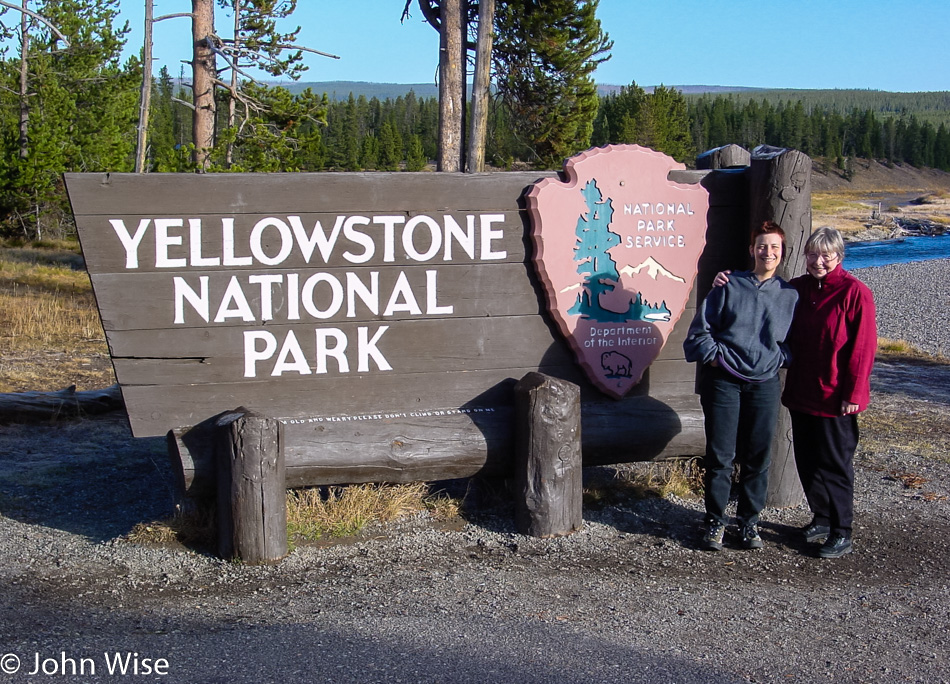
Here we are again at what was also our last stop on our way out of the park last May. The grand mythological status Yellowstone holds in my imagination makes the place even bigger and more exotic for me, I believe than for someone who might have grown up nearby. As a kid, this park was the place of wild nature, bison, bears including Yogi Bear who lived in Jellystone, Old Faithful, geysers, and mud pots like in Disneyland, but it was all a million miles away from Los Angeles in some place only certain fortunate people traveled to. It may as well have been on another continent. But here I am for a second time, not only in my lifetime but in the same year.
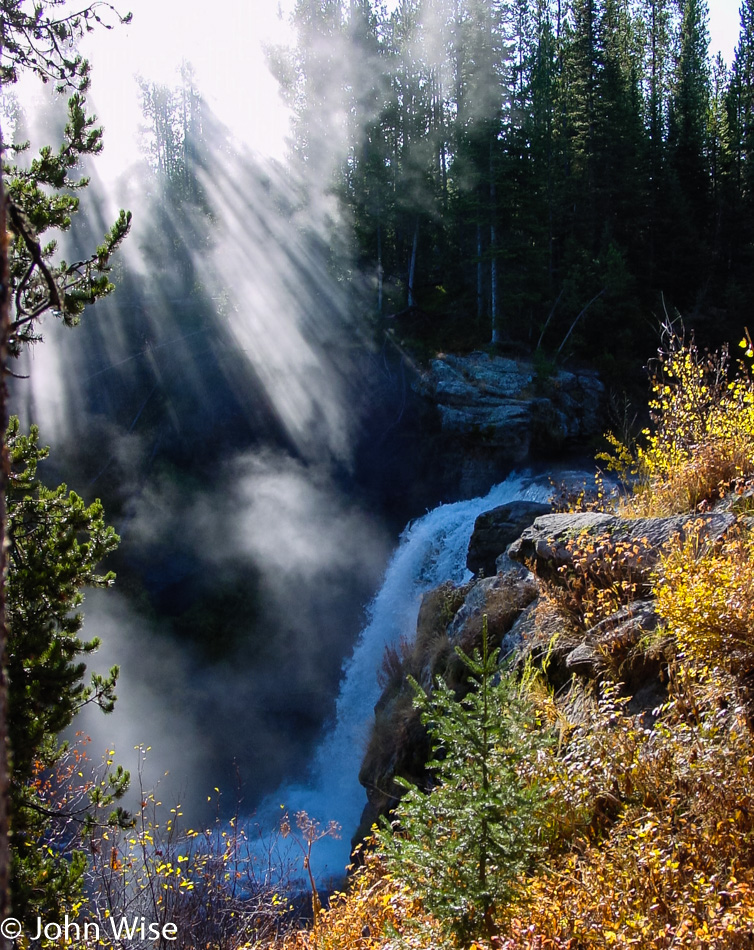
With five full days to explore Yellowstone, the plan is to go slow, although this is a mode of travel that, as of yet, is unfamiliar to Caroline and me. While we had essentially three full days on our previous visit, I’m hoping that nearly double that will allow us to see just about everything in the park. Yes, I can be that naive, but my logic is that combined with the other days, we should start to approach having seen the majority of Yellowstone. So, seeing we passed it last time, we take the time to walk over and visit Moose Falls, and immediately, I’m thrust into the primordial forest where mists drift into the sunlight, filtering down to the primitive land as life is taking hold and trying to give rise to the future. I’m seriously enchanted and feel as though I’ve seen something profoundly special.

After we explained what the Continental Divide is to Jutta, she wanted to stop for a photo to prove she stood on the hydrological line that delineates which way water will flow as it drops on the United States. On one side, the water will flow in the direction of the Pacific, and on the other, it essentially flows to the Atlantic, while some will also find its way to the Gulf of Mexico.
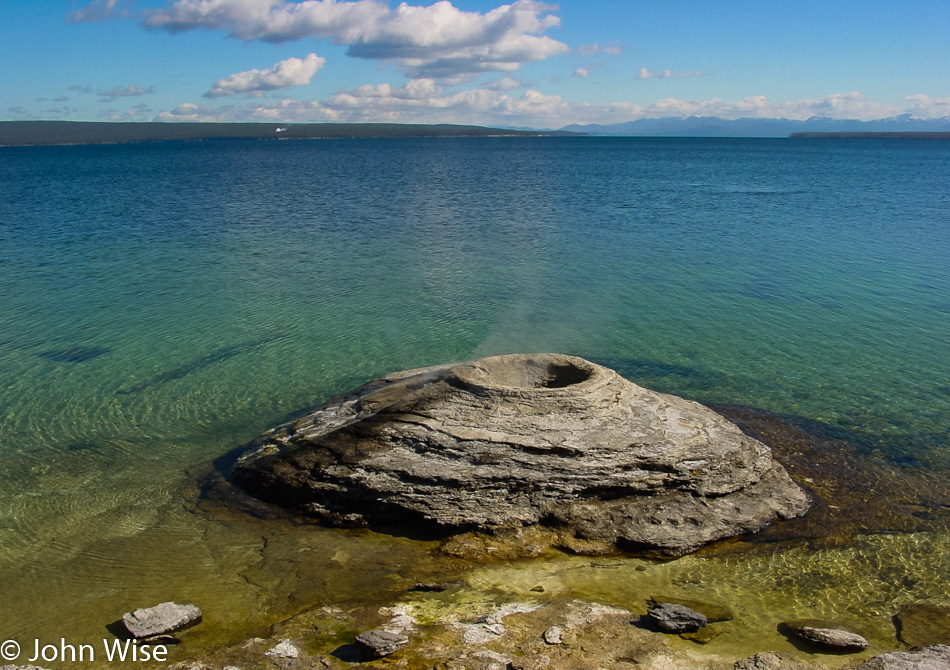
This is the world-famous Fishing Cone geyser at the West Thumb Geyser Basin. We’ve not seen this geyser in action so while it does emit a small amount of steam, we’ll have to take other’s word for it that it did spout water at one time. Today, it is considered a hot spring, but in its heyday, it could blast water up to 40 feet in the air (12 meters). It earned its name back in the 19th century when one could fish from its edge, and the popular story from back then was you could swing your catch right into the hot waters of the geyser and cook your fish without even taking it off the hook. Maybe a tall tale, but it sounds reasonable to me.
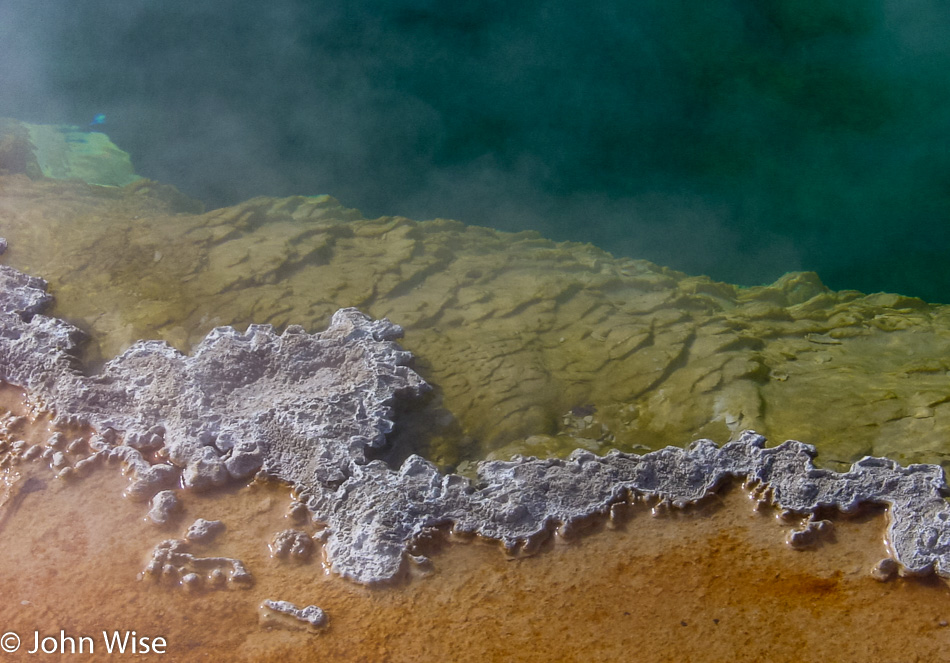
Back in the 19th century and early 20th century, it was said that the waters of Yellowstone’s hot springs were so clear that you could see forever into their depths. From changes that are occurring below the surface to uninformed visitors tossing coins, sticks, rocks, and other debris into the hot springs and geysers, we are seeing changes to the park’s features where cooling can cause murky waters and/or changes to the bacterial chemical composition that influences the colors, vibrancy, and general health of the location that is being abused.
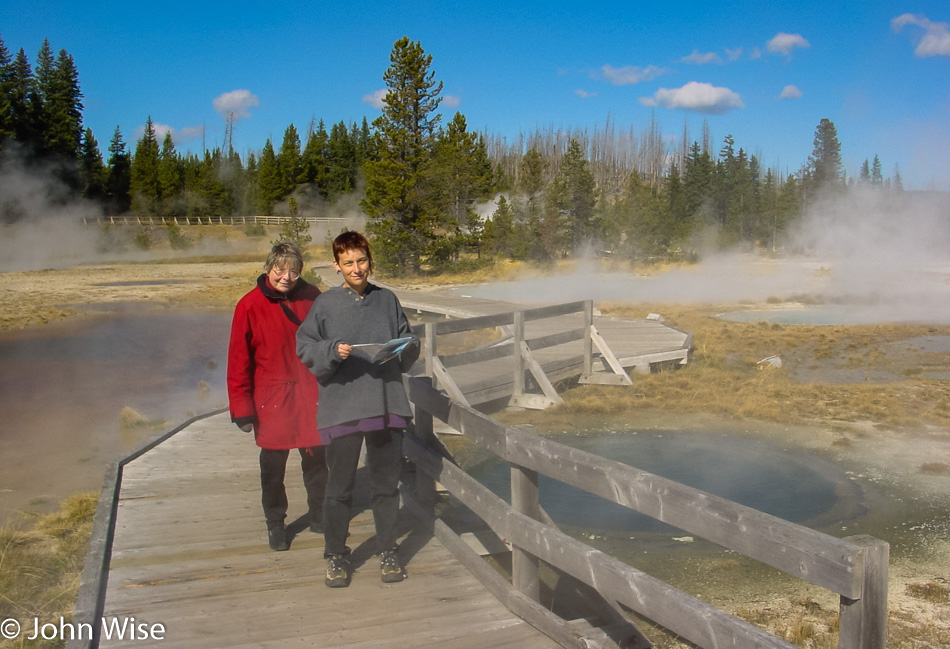
To stand in the steam, breathe the hint of sulfur in the air, and watch the mists drift off the hot springs, all the while safe upon boardwalks that have been built directly over and next to hot springs, mud pots, and fumaroles is a luxury we get to indulge just by putting ourselves here in the park. Yet, this isn’t good enough for some people who cannot heed the warning signs that implore visitors to stay on the trails and paths to protect the fragile ecosystem. Okay, so I have to admit some guilt, such as when I reach down to touch a bacterial mat, because who doesn’t want to know what space chicken feels like? And no, I’ve not tasted it to find out if it tastes like chicken.
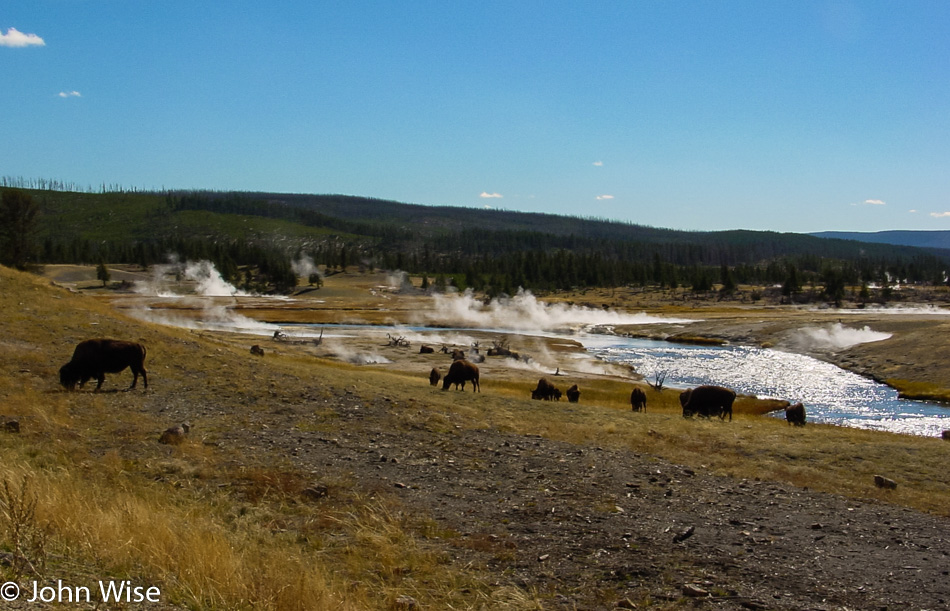
Sparkling midday sun off the Firehole River while steam rises on this golden fall day and bison graze, oblivious to those of us who marvel at the spectacle of what should be normal. Just before arriving here to witness this serene field of majesty, we spotted a grizzly in the woods tending to a kill. Its meal might have been an elk, and there may have been a cub or two with the bear, but the whole scene was heavily obscured by the trees. As it was fairly close to the road we thought it a better idea to keep on moving before momma bear decided it needed to protect the carcass of its children’s lunch.
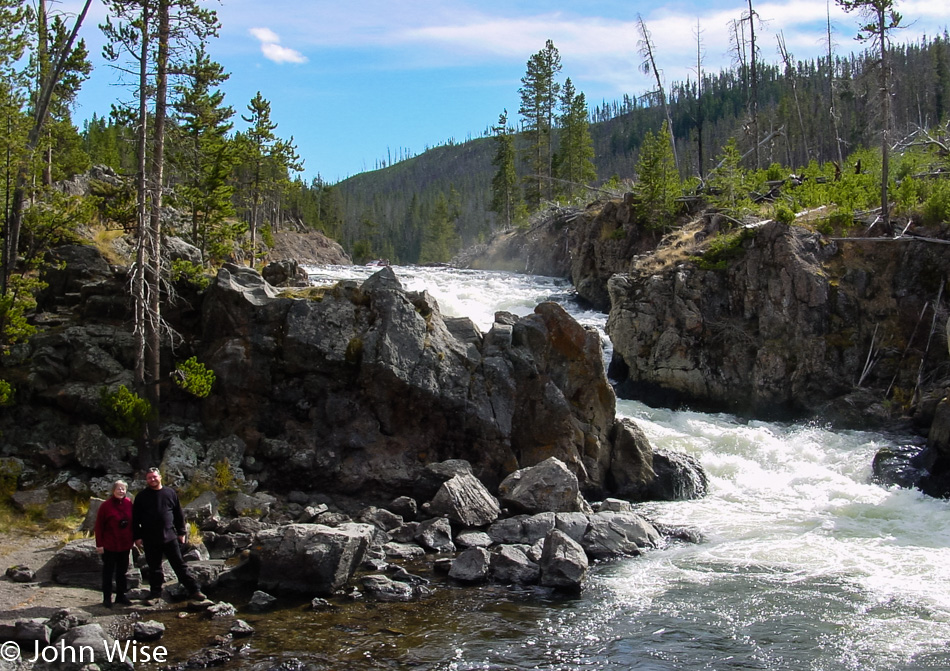
Knowing that we are staying at the Old Faithful Inn, we decided to pass it for now as we’ll have a couple more opportunities to walk its basin, and so we are using the daylight to give Jutta a broad overview of the park, similar to what we’ve already had. The short road that follows the Firehole Canyon Drive ends near this small waterfall that is kind of out of sight behind the rocks, though you can get the idea of what’s there by the white water rushing by. Just after this photo was taken, Jutta stumbled and fell on her knee; this is becoming a bit of a tradition where my mother-in-law gives us a scare early in the trip. Fortunately, this was a minor misstep that didn’t create an issue at all.
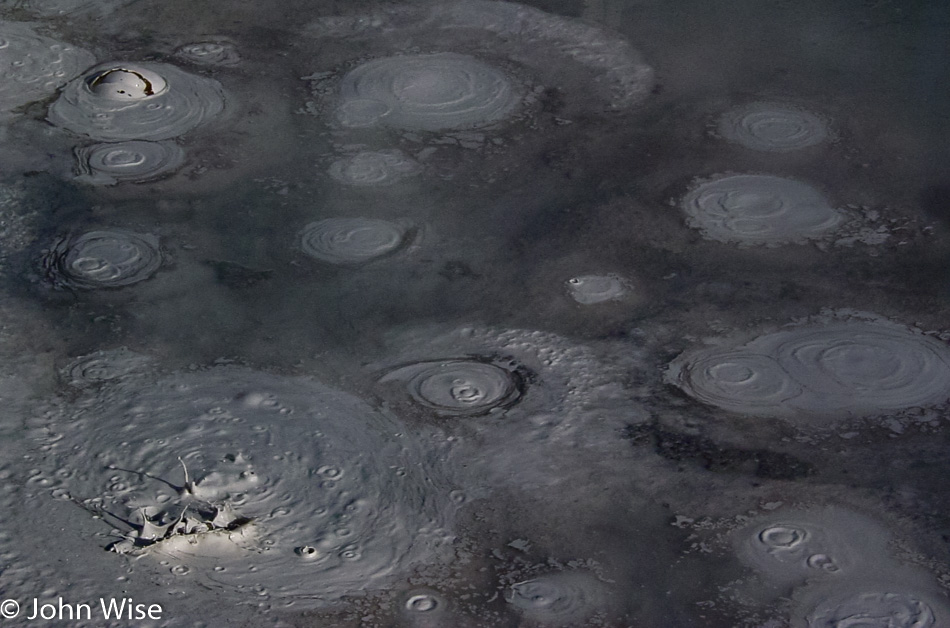
Anywhere else, mud is a nuisance, but here in Yellowstone at the Artists Paintpots, it is an art that comes with its own soundtrack as gas bubbles out of the hot frothing pit of doom. Doom because if you fall into any of these boiling traps, your time on this earth as a sentient being is probably coming to an end.
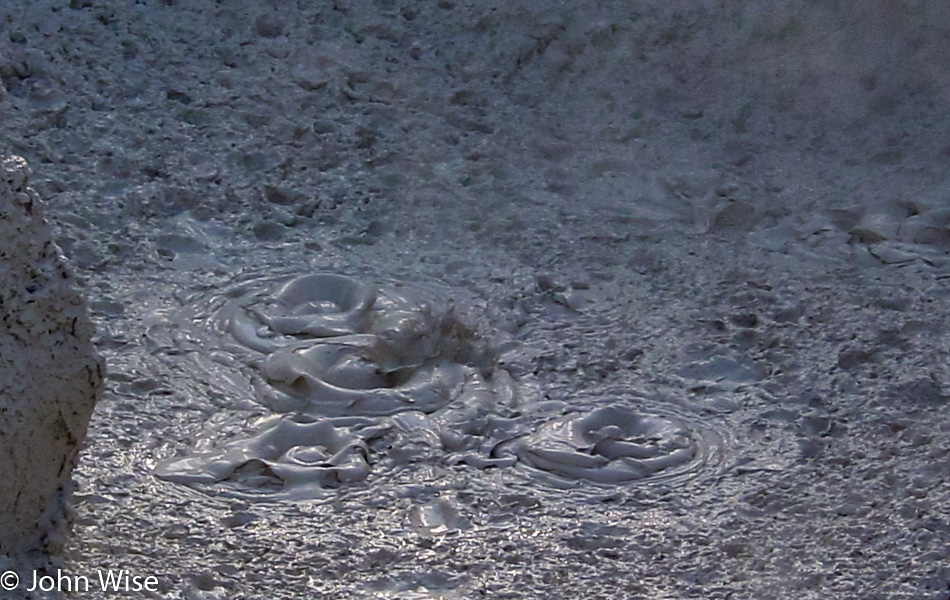
Not all muds are created equally, either. With the thicker paste of this goop comes different sounds that are heavier. Curiously I wonder if these mud pots are also like quicksand that once you enter, even if it wasn’t a cauldron of seething hot death, would you be pulled into the depths never to be seen again?
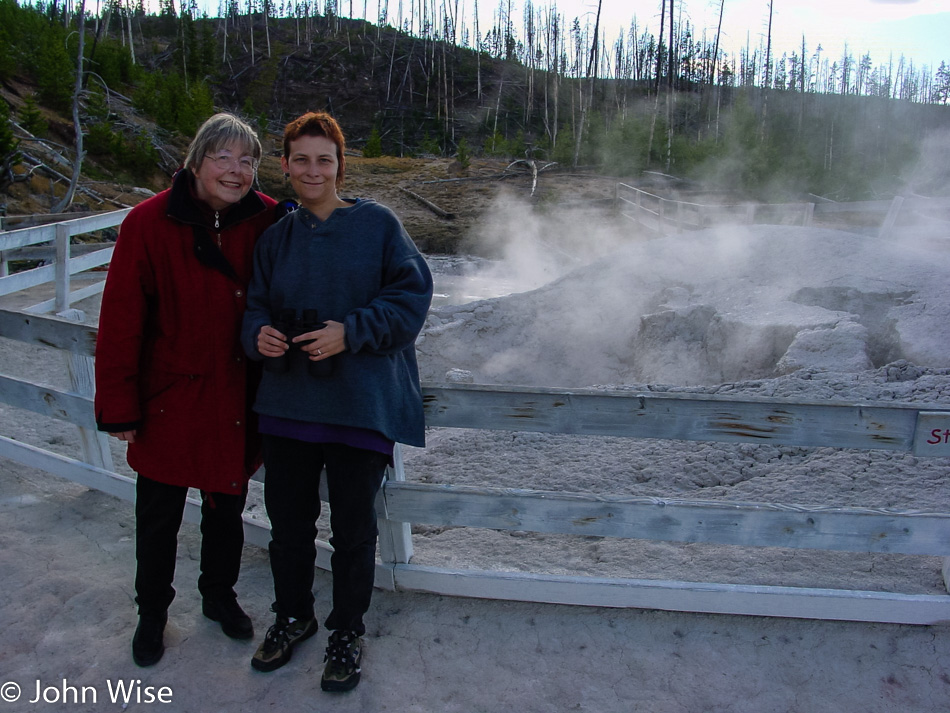
If you look at the “sticks” behind Jutta and Caroline, you’ll see some of the damage done by the fire from 12 years ago. Just before the fire, you would be looking at a forest line and may not be able to see the horizon shaped by the hillside where the trees were standing. Over time, this will all grow back and future generations won’t be seeing Yellowstone in quite the same we are seeing it today.
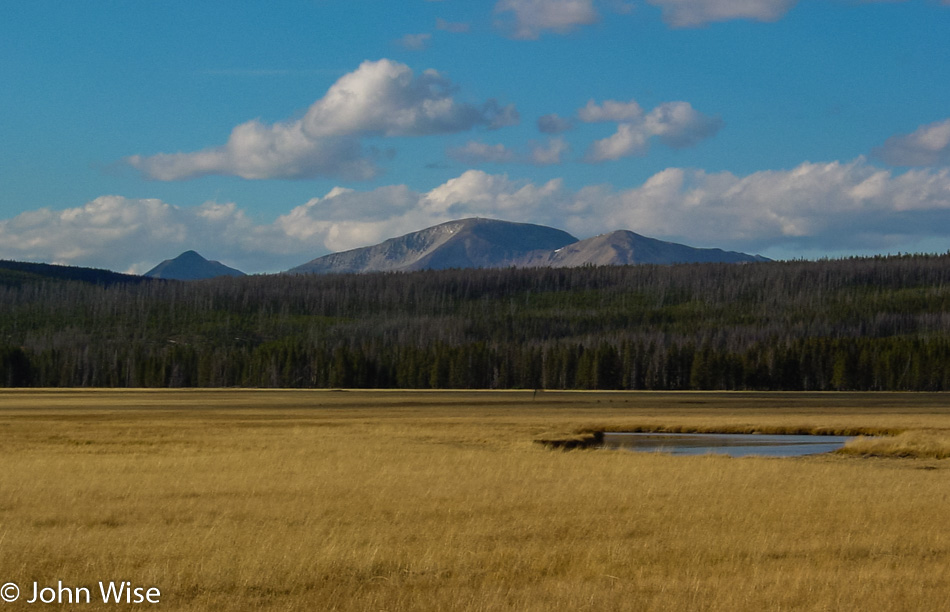
Here, we can get a good idea of what the tree line looked like before the fire. While many areas were dramatically affected by the clearing process of fire, some were unscathed. You are now at Gibbon Meadows after returning from the Artist Paint Pots Trail.
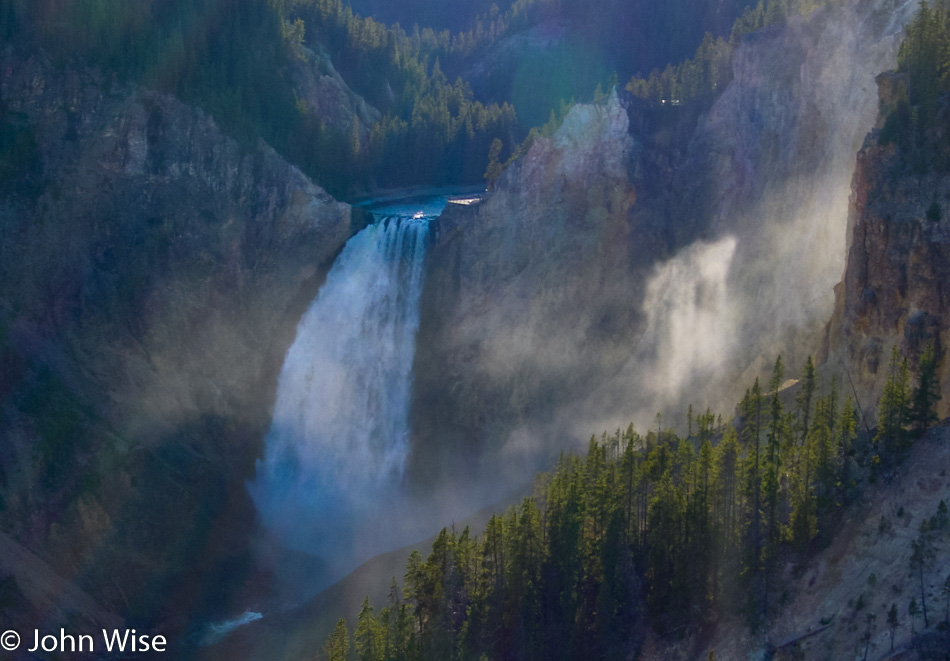
The Lower Falls of the Yellowstone River near Canyon Village only get a passing glance, which is better than nothing, but it’s getting late in the day and we are only at the halfway point for getting back to the Old Faithful Inn.
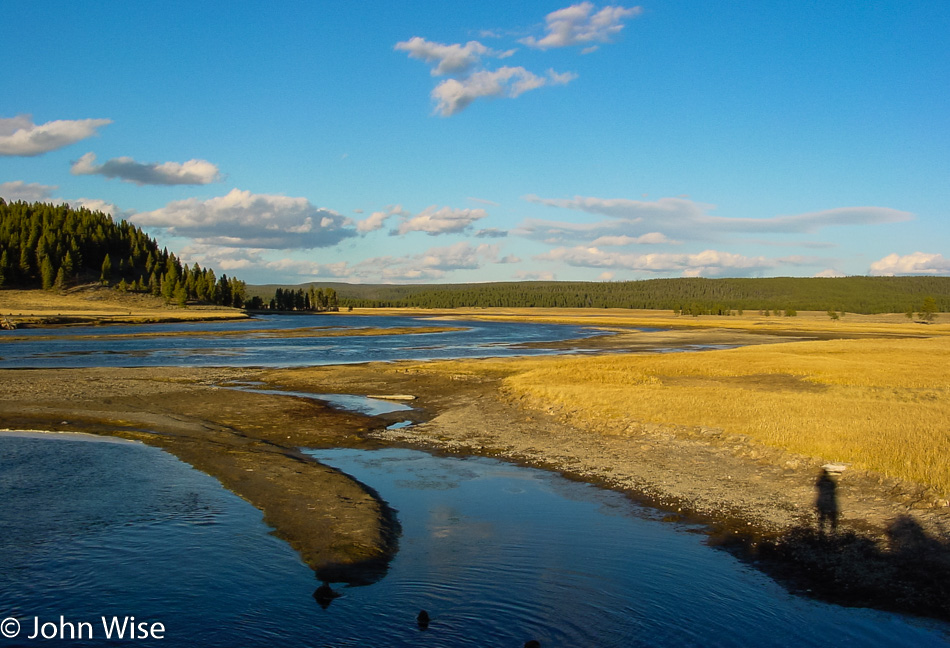
Long shadows of me standing on a bridge to take this photo give you a pretty good idea about just how late it is.
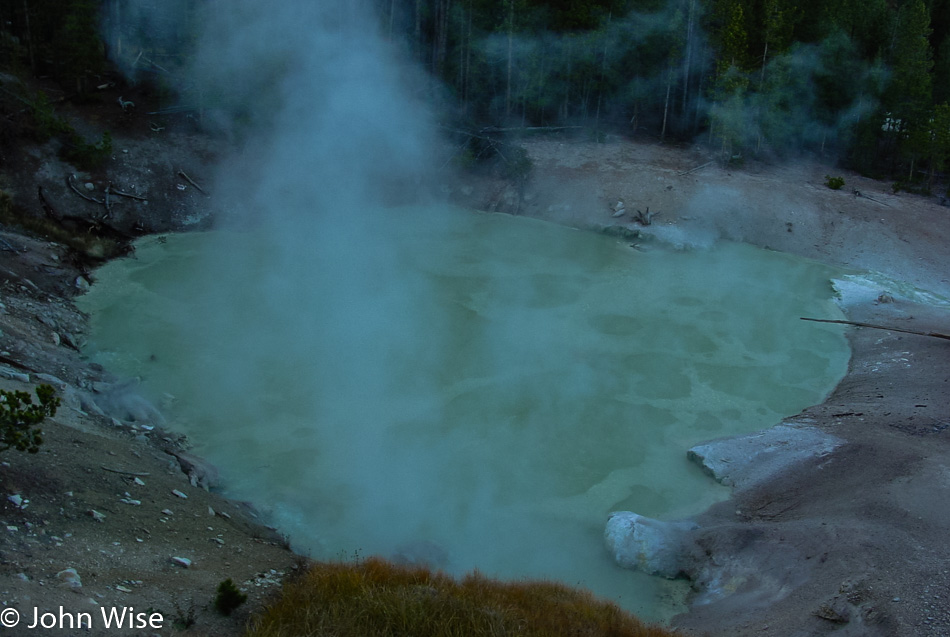
There’s no recollection of exactly where we were when I snapped this photo, and that’s okay because there’s always more to see and another reason to come back, not only to this location but to Yellowstone in general. What an amazing reintroduction to this giant corner in the northwest of Wyoming, and yet we’ve only seen a tiny part of it so far. Time to check into our rustic room over at Old Faithful Inn and get some dinner at their beautiful restaurant.